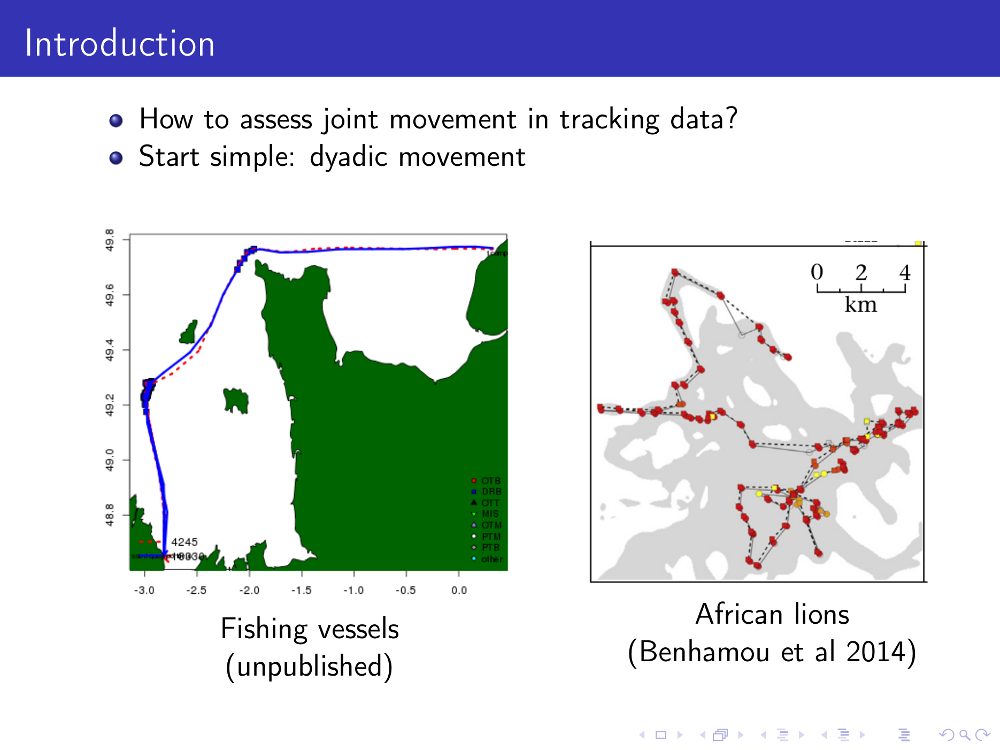Metrics for describing dyadic joint movement
Abstract
Animals are social beings, and as such, understanding their collective behaviour is key for both modelling and managing the ecosystems where they develop their movement. Collective behaviour can be produced at large group scales (flocks, colonies, schools) but also at small group scales (triads, dyads). A common pattern in collective behaviour is what we call here ‘joint-movement’ behaviour, where individuals move together during the total duration or a partial segment of their path. In movement ecology, dyadic joint movement has been poorly studied, and mostly in a data-driven approach, due to the tracking technology available. A few works have applied and compared several metrics assessing joint movement. However, the theoretical properties of such metrics have never been throughly studied.
In this work, we make an extended review of a series of metrics that are proposed in the literature for assessing joint-movement dyadic interaction. We investigate their relevance using three criteria corresponding to the desirable properties of metrics for assessing dyadic joint movement: practical use, degree of parametrization and computational cost. Moreover, joint movement can be linked to proximity (closeness in space-time) and coordination (synchrony). However, those properties are often difficult to dissociate. Through the description of the theoretical properties as well as the practical analysis of simulated case scenarios, we examine the association of the metrics to both components. We derive a graphical representation of the metrics in terms of their “distance” to proximity and coordination . We also discuss the assumptions and parametrization needed to be made on each one of the metrics for practical use in characterizing dyadic joint-movement in ecology.
